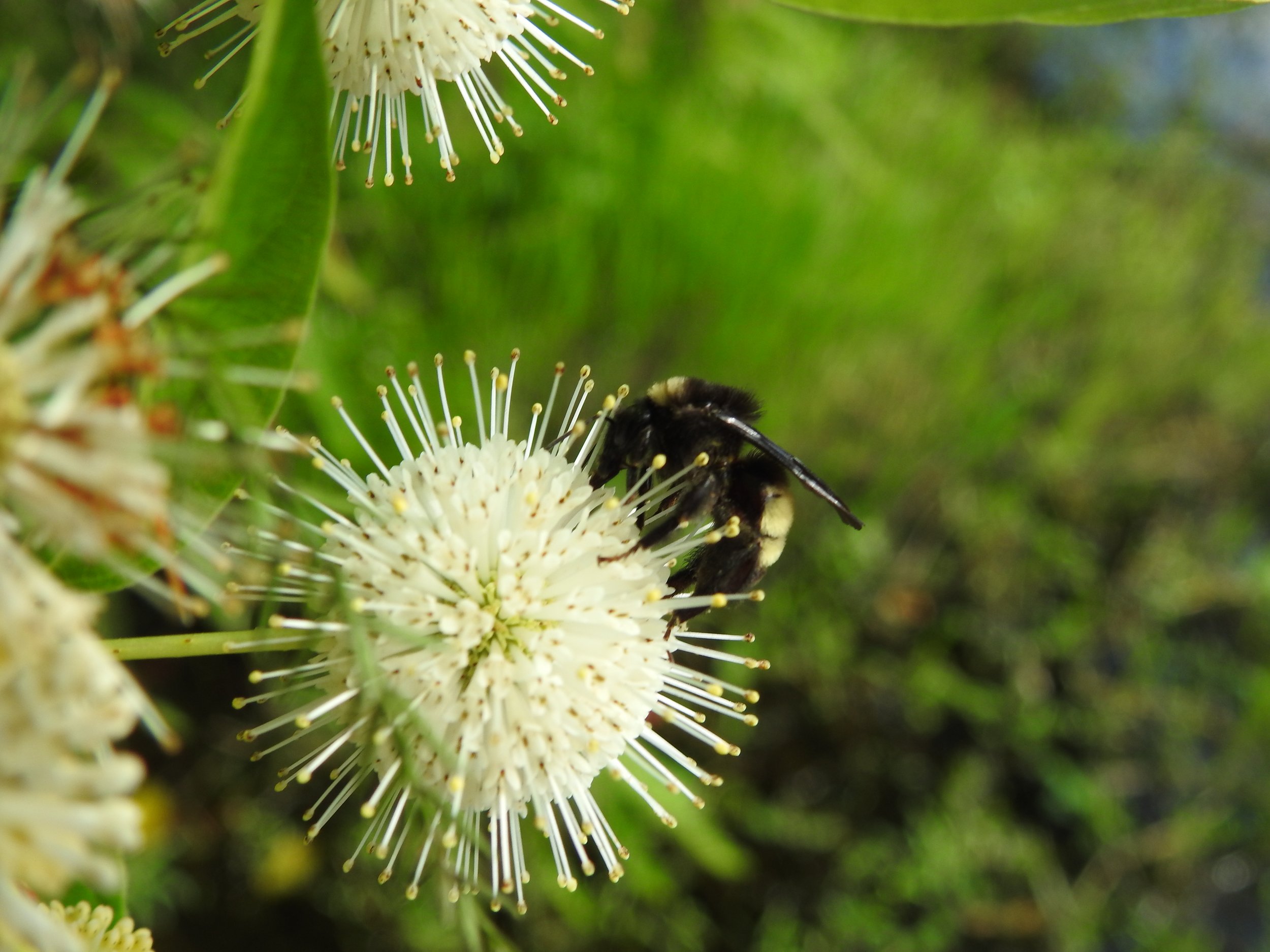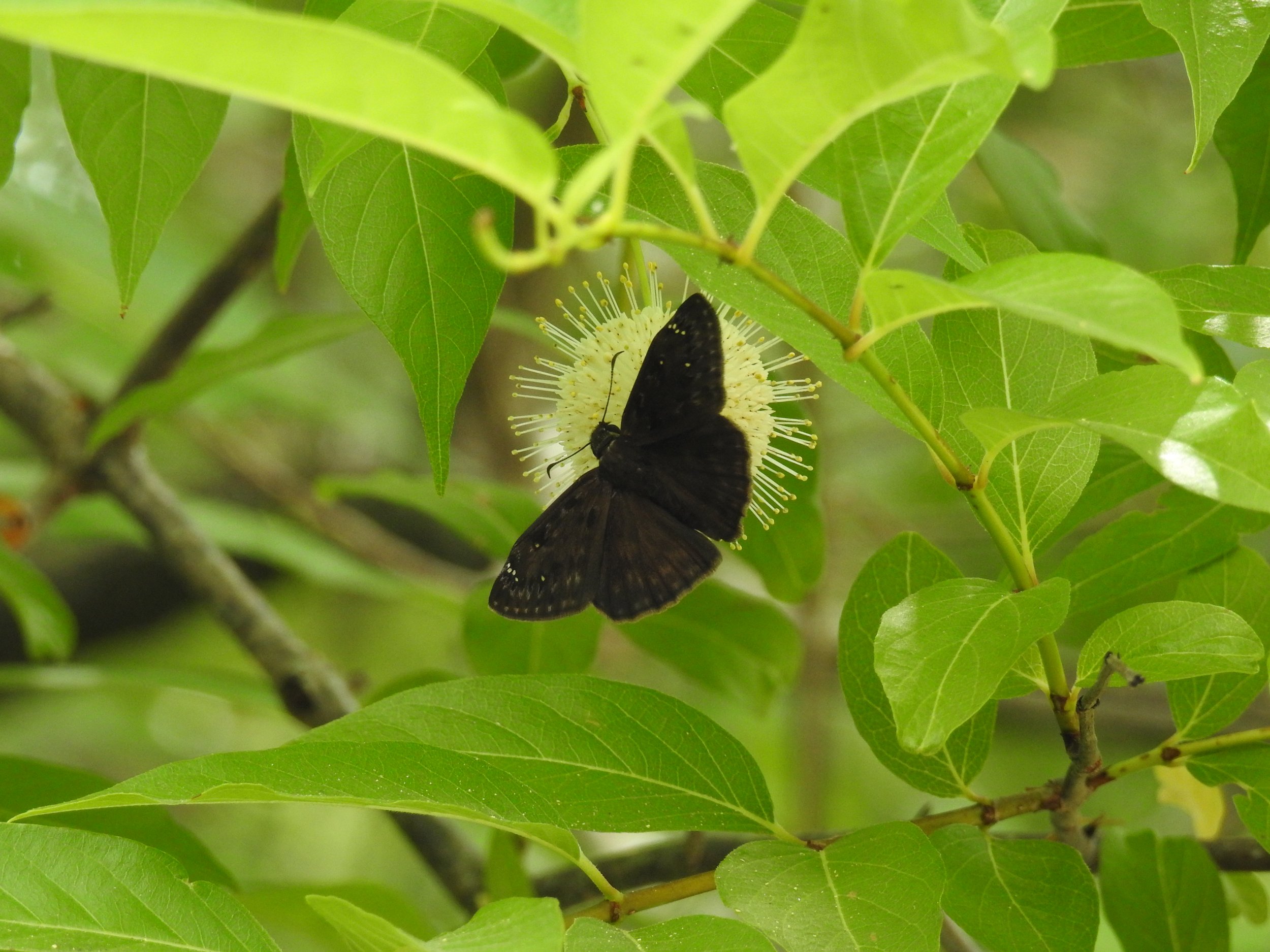Buttonbush
Written by ABNC Volunteer David Ozro Woods. David has a bachelor's degree in Natural Resources: Conservation Biology with minors in Marine Science and Plant Science
A close up of a Buttonbush flower (Photo Credit: Tyson and Stacy )
Buttonbush (Cephalanthus occidentalis) is a shrubby, obligate wetland plant that is native to the eastern and central United States, extending south into Central America with some scattered populations as far west as the Central Valley of California. It grows up to about 12 feet tall and prefers wet soils, making it a good indicator of a wetland area.
In the family Rubiaceae, Buttonbush is closely related to coffee. The genus name, Cephalanthus, is derived from the Greek words kephale and anthos, meaning head and flower, respectively. Looking at the ornate flower, it is clear as to why this name was chosen. The species name, occidentalis, means western in Latin. So it is the western head flower!
Birds, and especially ducks and other waterfowl, eat the seeds and fruit, and use the plant as a nest. The foliage is unpalatable and toxic to most livestock and domestic animals, but sometimes is browsed by deer. Buttonbush is recognized by pollination ecologists for its ability to attract a large number of native bees! As you can see in the photos, many insects flock to its flowers. It is a larval host to the Titan sphinx and Hydrangea sphinx, among others.
An American Bumble Bee resting on a Buttonbush flower (Photo Credit: Tyson and Stacy )
A Horace's Duskywing (Erynnis horatius) resting on a Buttonbush Flower (Photo Credit: Tyson and Stacy )
To celebrate plants and pollinators in the Houston area, Armand Bayou Nature Center partners with the City of Pasadena for a fun Park for Pollinators Bioblitz Event every September!



